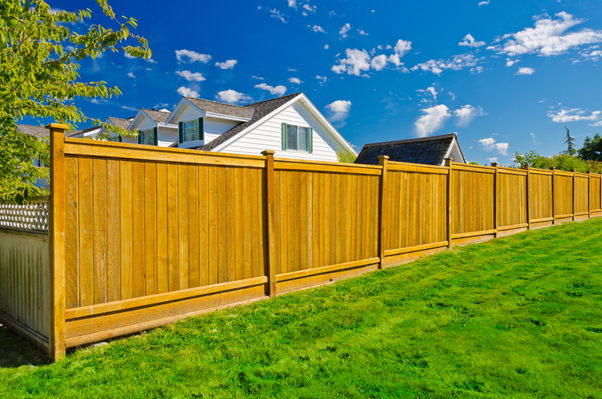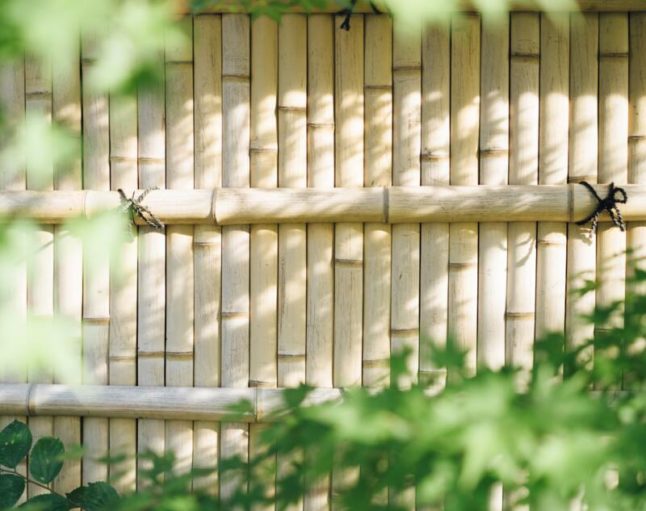All Categories
Featured

As sustainability becomes a progressively crucial factor to consider for homeowners, even more individuals are turning to green fencing materials. Whether you're developing a fencing for privacy, safety, or aesthetic functions, selecting products that lessen ecological effect is a terrific means to add to a much healthier earth. Below's a check out the leading environment-friendly fencing materials readily available today and their benefits.
- Bamboo Fence: Fast-Growing and Renewable. Bamboo is just one of one of the most lasting fencing materials on the marketplace. Unlike conventional timber, bamboo is extremely fast-growing, which indicates it can be collected without diminishing woodlands. This makes it a highly renewable energy, with some varieties expanding up to three feet in a single day.
Environmental Advantages: Bamboo soaks up extra co2 than lots of various other plants, aiding to balance out greenhouse gases. Its quick growth rate indicates it can be gathered frequently, making it a renewable product. Resilience: Bamboo fences are naturally immune to parasites and decay, especially when effectively dealt with, reducing the requirement for chemical treatments. Visual Allure: Bamboo supplies an unique, natural appearance that matches both conventional and modern-day landscape design designs. However, while bamboo is a wonderful choice, it is essential to make sure that the bamboo used is responsibly sourced to avoid adding to ecological degradation.
- Recycled Steel Fence: Long Lasting and Reusable. Recycled metal secure fencing, such as light weight aluminum or steel, offers a green choice to conventional timber fencings. These metals are usually made from recycled products, lowering the need for brand-new mining and the ecological effect linked with extracting basic materials.

Ecological Benefits: Steels like light weight aluminum and steel are 100% recyclable, indicating they can be reused and repurposed forever without shedding quality. Longevity: Metal fences are incredibly sturdy, immune to weather, bugs, and put on, making them a resilient selection that does not require to be replaced frequently. Low Maintenance: Recycled steel fencings call for minimal upkeep and do not require to be repainted or sealed routinely, minimizing the need for added chemicals. The primary drawback is that steel fences might not provide the very same privacy as timber or vinyl alternatives, as they can have spaces depending upon the style.
- Recycled Timber Secure Fencing: All-natural and sustainable. For those that enjoy the timeless look of wood however desire an environmentally friendly option, recycled wood fencing is an outstanding selection. This product is made from recovered timber from old structures, pallets, and even furnishings, diverting these products from landfills.
Ecological Advantages: Using recycled wood prevents the need to cut down brand-new trees, assisting to lower and save forests deforestation. Aesthetic Allure: Recycled timber uses a rustic, natural appearance and can be tailored to fit any type of home design. Sustainability: Because it is sourced from existing wood items, recycled wood doesn't need brand-new processing, which minimizes power usage and carbon discharges. While recycled timber fences are a green choice, they might need even more maintenance in time than steel or bamboo fencings, as timber can be susceptible to decay and bugs if not properly treated.

- Living Fences: All-natural and Environment-friendly. Living fencings, which are made from thick growings like trees, hedges, or bushes, supply a completely all-natural and green choice to standard fence products. These fences not only supply privacy however additionally enhance your garden with gorgeous plant.
Environmental Advantages: Living fences can absorb carbon dioxide, give habitat for wild animals, and enhance air high quality. Sound Reduction: Dense growings can work as natural , reducing traffic noise or various other unwanted noises. Aesthetic Appeal: They add a soft, all-natural aesthetic to any building and can be customized to fit any kind of style. While living fences are green, they do require normal upkeep such as pruning, watering, and in some cases pest control.
- Hemp Secure Fencing: Biodegradable and Solid. Hemp is another sustainable material that has actually made its method right into the fence sector. Hemp fencings are made from solid hemp fibers that are woven together to create green and durable panels.
Environmental Advantages: Hemp grows promptly and requires minimal water, making it a resource-efficient plant. The product is naturally degradable and can be composted when no more required. Strength and Resilience: Hemp secure fencing is surprisingly strong and weather-resistant, making it appropriate for numerous environments. Sustainability: Hemp farming calls for fewer pesticides and plant foods than standard plants, making it an eco liable choice. Hemp fence may not be as extensively available as various other products, depending on your location.
Verdict: Lasting Choices for Every Need. Choosing environment-friendly fence materials is an excellent method to reduce your ecological impact while still attaining the privacy, protection, and visual you want. From fast-growing bamboo to recycled timber and steel, there are a selection of lasting options that can assist you create a gorgeous, practical fence while supporting a much healthier planet. By thinking about factors such as durability, maintenance, and environmental influence, you can pick the most effective environmentally friendly fence product for your needs and way of living.
Latest Posts
Bid Farewell to Scrubbing: Bath Fitter's Uncomplicated Restroom Upgrade
Published Apr 22, 25
1 min read
Classy, Sturdy Floor Tile Flooring for each Space
Published Apr 22, 25
2 min read
Expert Vehicle Maintenance at Montclare Auto Repair - Fix Your Car Now!
Published Apr 22, 25
2 min read
More
Latest Posts
Bid Farewell to Scrubbing: Bath Fitter's Uncomplicated Restroom Upgrade
Published Apr 22, 25
1 min read
Classy, Sturdy Floor Tile Flooring for each Space
Published Apr 22, 25
2 min read
Expert Vehicle Maintenance at Montclare Auto Repair - Fix Your Car Now!
Published Apr 22, 25
2 min read